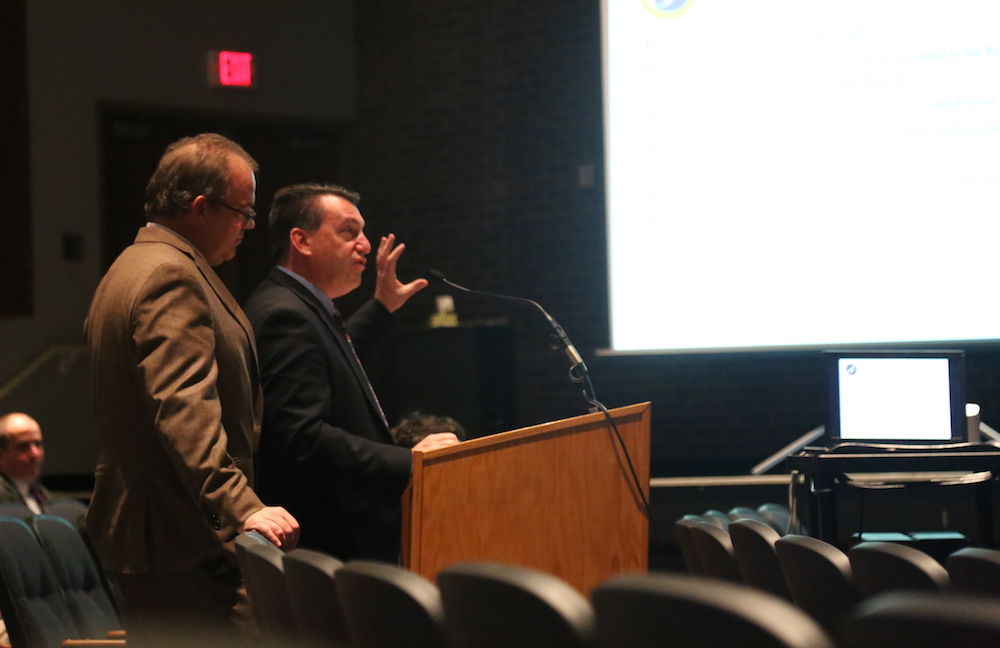Shoreham-Wading River details Smart Schools Investment Plan

The Shoreham-Wading River School District approved the first draft of its Smart Schools Investment Plan at a Board of Education meeting Tuesday.
The draft was approved directly after Peter Esposito, director of technical services, and Alan Meinster, assistant superintendent for curriculum, instruction and assessment, presented a preliminary version of the plan.
The Smart Schools Bond Act was passed by New York State voters in a statewide referendum in 2014. The law required the state to distribute up to $2 million to each school district to finance improved educational technology and infrastructure. Shoreham-Wading River School District has been allocated a little more than $1 million for its improvements. The SSIP proposes where Shoreham-Wading River plans to distribute the funds.
“This plan will address different security needs for this district,” Mr. Meinster said.
The biggest financial modification on the plan aims to replace 450 classroom and administrative computers in the district, which total $425,000. All the PCs being replaced were installed in 2013.
Mr. Esposito said upgrading the computers throughout all the schools would help students learn better.
Installing a visitors booth in the high school parking lot and adding security cameras throughout the building, another part of the plan, will begin next summer, Mr. Esposito said. These modifications will total about $83,000.
“A visitors booth, if it’s put in the right location, will allow someone to look for parking passes, alert the administration as needed … and give that extra layer of security that’s needed,” Mr. Esposito said.
The SSIP also aims to provide faster and better internet connection, Mr. Esposito said.
“This is what we run our Wi-Fi off and how we run our cameras,” he said. “This plan will allow us to install ample cameras where needed,” he said.
Mr. Esposito also addressed the goal to replace 120 classroom projectors with new LCD projectors. These projectors, he said, are 10 years old, and the replacements will improve image quality.
In March 2016, the initial plan for the budget was established at the district’s technology committee meeting. Later that month, the Board of Education met with parents, teachers and technology consultants to determine what could be improved and at what cost.
Superintendent Gerard Poole said the board would post the SSIP presentation on the district’s website for at least 30 days to allow for community feedback, a state requirement. After, the state will approve or deny the plan.
Photo caption: Mr. Esposito (left) and Mr. Meinster (right) explain the details of the district’s Smart Schools Investment Plan Tuesday. (Kate Nalepinski photo)









